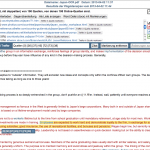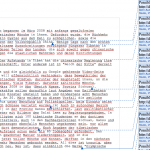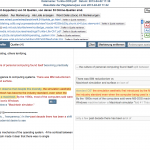Software Profile | Description | Pros & Cons | Report | Usability | Summary | Screenshots | Links
Software Profile
| ID | S13-04 |
| Product | PlagScan |
| Company | Resonet UG (haftungsbeschränkt) Gottfried-Hagen-Straße 60-62 51105 Cologne Germany Email: info@plagscan.com Tel.: +49 (0)221 75988994 Fax: +49 (0)221 75988996 |
| Web-Site | www.plagscan.com/ |
| Software-Type | Online, connectable to Moodle and other learning management systems via API |
| Pricing | $13 / 500 PlagPoints $25 / 1250 PlagPoints $39 / 2000 PlagPoints |
| Testdate | 28 March 2013 |
Description
PlagScan is a system that is offered by the German company Resonet UG, located in Cologne. The company sells so-called „PlagPoints“ that are used as credits to pay for plagiarism checks. Each PlagPoint costs 2 to 3 cents, per PlagPoint the user can test up to 100 words. The costs are clearly listed on the home page.
Pros & Cons
The system rapidly uploads the files and accepts all typical file formats. According to Resonet, there is also an API so that learning management systems such as Moodle can interface with PlagScan. The system was able to find plagiarisms in short files, but identical texts were not flagged when incorporated in a larger document. This may cause false negatives for master’s theses and doctoral dissertations. Short phrases such as „would help clarify the role of the“ were often marked as plagiarism, inflating the total score. The system was not very effective, as it only achieved 55% of the total possible points.
PlagScan was not able to work with the Hebrew test cases, in general any non-Latin characters cause trouble. The system was also unable to find Google Books sources.
The users need to be aware that all tests are deleted without warning after six months, unless the user has paid extra to store the reports.
Report
The reports are prepared reasonably fast and report of percentage of the text that is considered to be plagiarism. However, the numbers reported on the overview page do not always correspond with the numbers on the individual reports. The reports that are generated by PlagScan are quite unintelligible. It is not made clear what part of the text was found in what source, and since they are not marked the user must spend much time trying to find the reported text parallels. Many sources are reported multiple times, which also confuses the final results.
The Word-based report, which is said to be a side-by-side view, is so completely chaotic and confusing that it is totally useless.
Usability
The system for setting up user accounts and moving PlagPoints between them is quite well suited to a university environment and the overview page is well structured, even if it does look quite old-fashioned. The reports, as discussed above, are so difficult to use that the usability score was downgraded.
Summary
PlagScan is not very effective, but does find a few sources. However, much time needs to be invested in understanding the reports, which makes the system only marginally useful for academic purposes.
Screenshots
- One report view in PlagScan
- Report as Word document in PlagScan
- Report view in PlagScan
Links
The company has published a response in German: http://www.plagscan.com/de/pr?11



